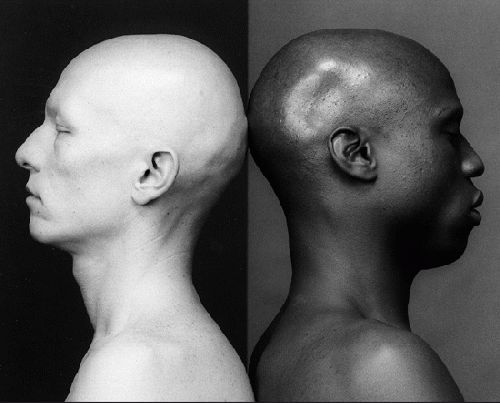
Robert Mapplethorpe: An Evocative and Controversial Artist Robert Mapplethorpe was a very famous photographer in the mid-to-late 1900s. He was known for his photography of artists, musicians, and film stars, along with members of the sadomasochist (S&M) and homosexual male cultures. Most all of his photographs were captured in black and white and his subjects were often naked and portrayed in “obscene” ways. The word “obscene” is quoted because it is contingent on what the viewer considers to be obscene. Mapplethorpe’s work is highly controversial, and it was especially so during his artistic reign in the 1970’s and 80’s. His unapologetic depiction of both the male homosexual and S&M cultures during a critical era of sexual revolution places Mapplethorpe in a position of both high regard and harsh criticism. The aesthetics involved in Mapplethorpe’s photographs are equally as astounding as the photographs themselves. Mapplethorpe carefully manipulates elemental structures such as lines and lighting to produce a photo that is powerful in its simplicity. Although his photographs are solely in black and white, his manipulation of color could not be more apparent. The pairing of a white male with a black male, for example, creates a poetic juxtaposition that is both literal and symbolic, as it alludes to an underlying cultural context of race, but more importantly, homosexuality. Mapplethorpe’s photographs were often widespread and intended to break down the normative politics that dictated notions of masculinity, gay manhood, whiteness, and blackness. He started shooting in the late 1960’s, fortuitously around the same time as the start of the gay liberation movement. This inspired the overall aim for his photography: to increase S&M and homosexual visibility in American society, specifically in the context of male homosexuality and erotics. Mapplethorpe’s first solo gallery exhibition, titled, “Polaroid” comprised of Polaroid photographs of New York’s underground S&M scene. These photographs were extremely successful in capturing the culture’s rawness, and the Polaroid medium gave the spread an authentic touch. While this work was undoubtedly evocative, it did not receive near as much attention as his most debated exhibition, “The Perfect Moment.” “The Perfect Moment” showcased visual snapshots of a frank and even confrontational homoerotic play between homosexual lovers. The photographs were indeed graphic, as they flagrantly portrayed S&M behaviors, homosexual interactions, and urophagia. Probably the most notorious image from the exhibition features Mapplethorpe penetrating his own anus with a bullwhip while antagonistically maintaining eye contact with the camera. The photograph is perhaps the most controversial, as it shamelessly rejects the cultural restraint against the experience of anal pleasure, and graphically exposes the taboos of male homosexuality. “The Perfect Moment” elicited a national debate about public funding for the arts, as well as the issues of artistic freedom, public reception, and censorship. Republican Senator Jesse Helms of North Carolina was outraged at the homoerotic and sadomasochistic themes of some of Mapplethorpe’s work. He attempted to limit taxpayer support for what he deemed “indecent” and “obscene” imagery by introducing a constitutional amendment to disavow the use of tax dollars for “offensive” projects. In other words, Helms pronounced Mapplethorpe’s work as criminal on the basis of obscenity. The problem that exists in this context is that we cannot collectively define indecency and obscenity. What might be offensive to one person may be perceived as ingeniously artistic, and by no means offensive, to another. Why should the government be permitted to regulate a function of society of which their knowledge is limited? Do most members of Congress have some sort of artistic background with which they can make accurate aesthetic judgments? I highly doubt it. The government strictly has an obligation to support the arts, not to meddle with them. In trying to censor the work of artists such as Mapplethorpe, we end up stifling their creativity. This is criminal in itself, as it suppresses the environment of innovation, thus hindering society’s progression. By declaring some art as unacceptable for the public eye, we are essentially implying that artists must follow a code of unspoken morals and ethics if they intend on having their work available to the public domain. As art is entirely subjective, it makes it impossible to determine such guidelines. Furthermore, if art can be considered a form of free speech, is it not a violation of the First Amendment to revoke federal funding on grounds of obscenity? Is it possible that Helms committed a crime when he forced the Corcoran Gallery of Art to pull Mapplethorpe’s artwork out of the show? I say, yes. Art is one of the most valuable forms of expression, and it should not be limited just because some people do not agree with it. Everyone has a choice, and if people do not wish to observe art like Mapplethorpe’s because is too offensive, then they should simply choose not to. Sources: http://content.time.com/time/specials/packages/article/0,28804,2063218_2063273_2063220,00.html http://catalyst.wpadc.org/?p=2845

